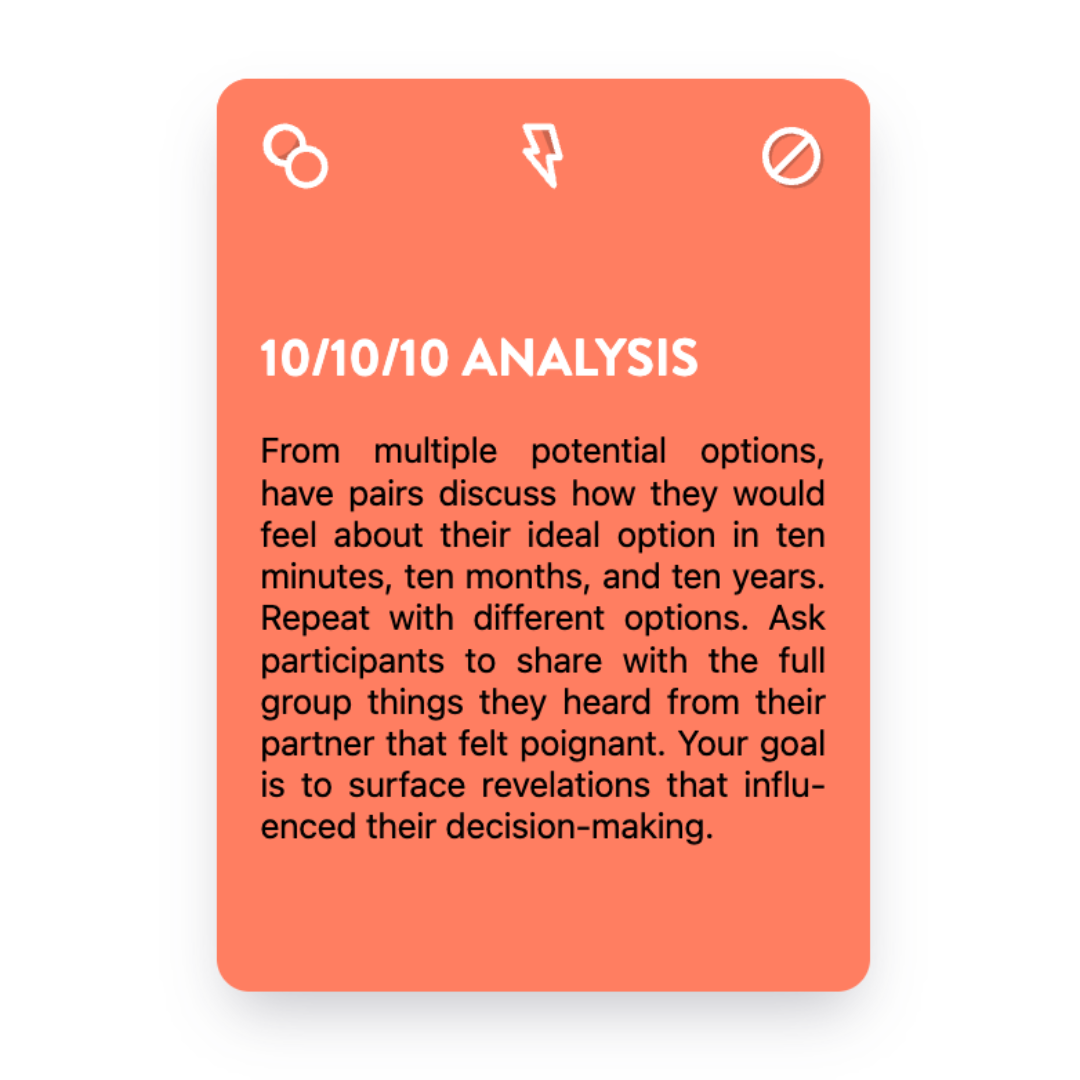Here’s how to do it
When considering multiple options, run a 10/10/10 Analysis and ask participants to consider the potential outcomes of the ideal option in ten minutes, ten months, and ten years from now.
We typically run this activity in pairs (breakout rooms on Zoom) and have folks discuss their observations with their partners. It’s okay for the pairs to agree on the same choice, or have differing ones.
In speaking to each other, they’re going to ideally discover more of their own motivations, considerations, and stories behind their choice, as well as things that they had not considered or taken into account.
**Pro Facilitator Tip: run a Minute Paper before sending folks off to work with their partners. The quick journaling will increase the quality of response and allows internal processors a moment to gather their thoughts.
Example Prompts
“As an organization should we invest more in expanding our relationships with community groups, establishing ourselves as thought leaders within the space, or expanding our internal programs?”
“We want to consider not using any social media in the future for marketing. If as an organization we stopped using social media right now, how would you feel about that decision in 10 minutes, 10 months, 10 years? What do you feel the consequences of that decision would be?”
“I can see that there’s a lot of excitement around this idea of putting on a major event as an organization. I want us to consider that decision so we’re going to look at it 10 minutes, 10 months, 10 years, how would prioritizing this and making it happen this year, shape us?”
When it’s useful
Use 10/10/10 Analysis when you have decisions that have short and long-term effects, but where one of those time horizons might be swaying the final decision.
It’s great when individuals feel very set on their decision, but the collective hasn’t (or has hesitations) because you get more clarity on what’s motivating the individual decision, as well as insight into what’s motivating others.
**Sneaky Facilitator tip: use it when you want people who are currently settled in their decision to consider or at least empathize with why other people may not be in alignment with them.
Now it’s your turn!
This is a unique execution process because it is not directly comparing the ideas, but rather how we may think/feel about the decision in the future. The idea itself remains stable while we imagine what the world may look like around it. There may not be much change in 10 minutes, but the same can’t be said for 10 years.
We find it’s an incredibly powerful way to help folks ease up any defensiveness around a decision and broaden the scope and understanding of our thoughts going into making a decision.
While this makes a great framework for facilitated sessions and meetings, it’s also a unique way to reflect on ourselves and our own choices as we round out this year. What will our New Years’ resolutions leave us feeling about our lives in ten days, ten weeks, or ten months?
We’d love to know if you include this card in your agenda, or even if it’s a jumping-off point when journaling!
